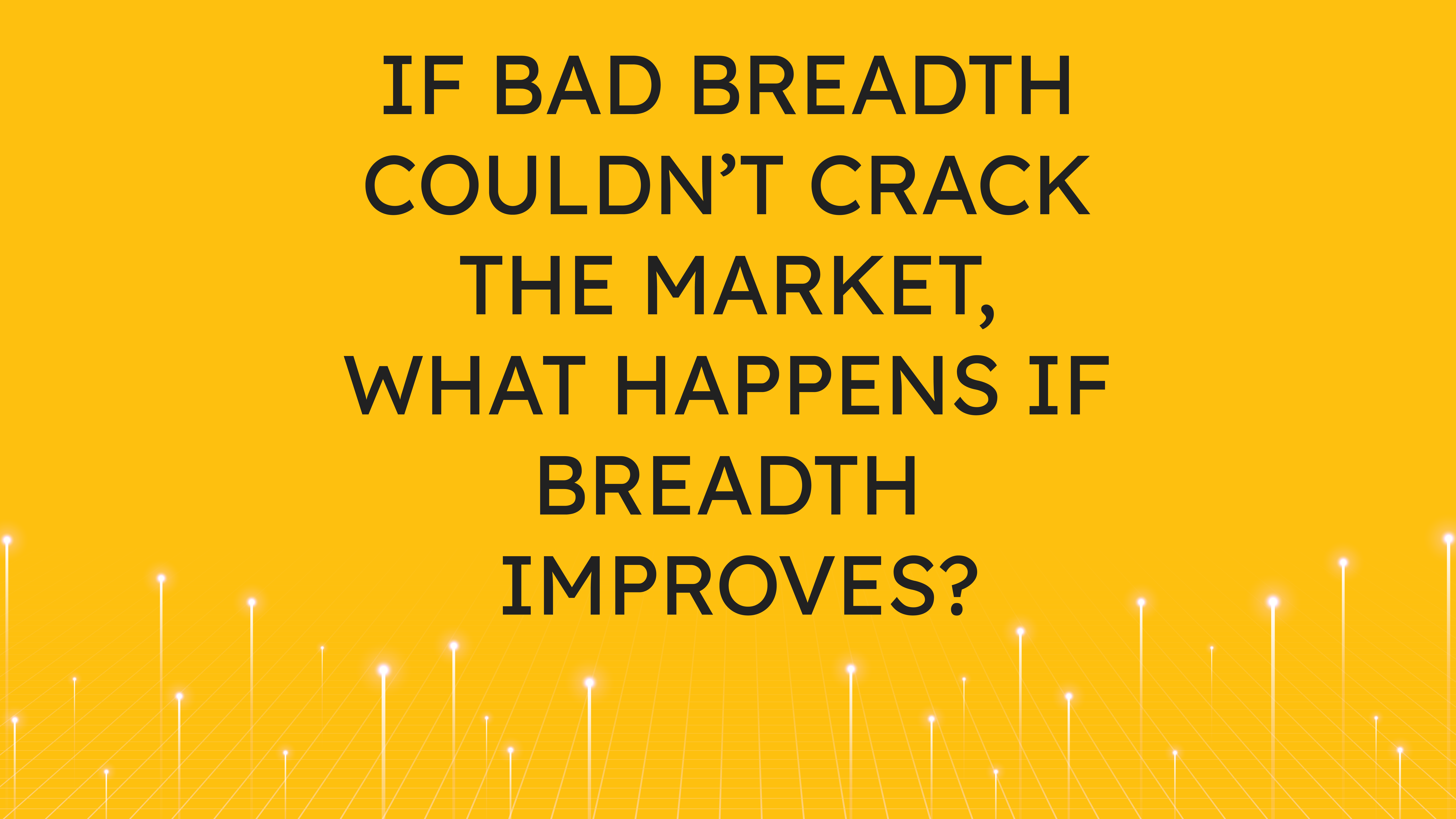
Key Points
- Financials in Europe Break to New Highs
- NYSE Breadth Improves but Still has Work to Do
- Watching NYSE New Lows
- New Highs for the S&P 500’s Advance/Decline Line
- Small Caps Show Meaningful Strength in the Short-Term Metrics
Chart in Focus:
In our note on Tuesday, we highlighted the improvement in the Financial sector. However, it appears that this may be more than a U.S. story. The S&P Europe 350 Financials Index has retaken the 50-day moving average and traded to a new high yesterday on an absolute basis.
The group is also improving relative to the S&P 500 as the ratio moved above the 50-day moving average and is on the verge of breaking the downtrend from the March peak.
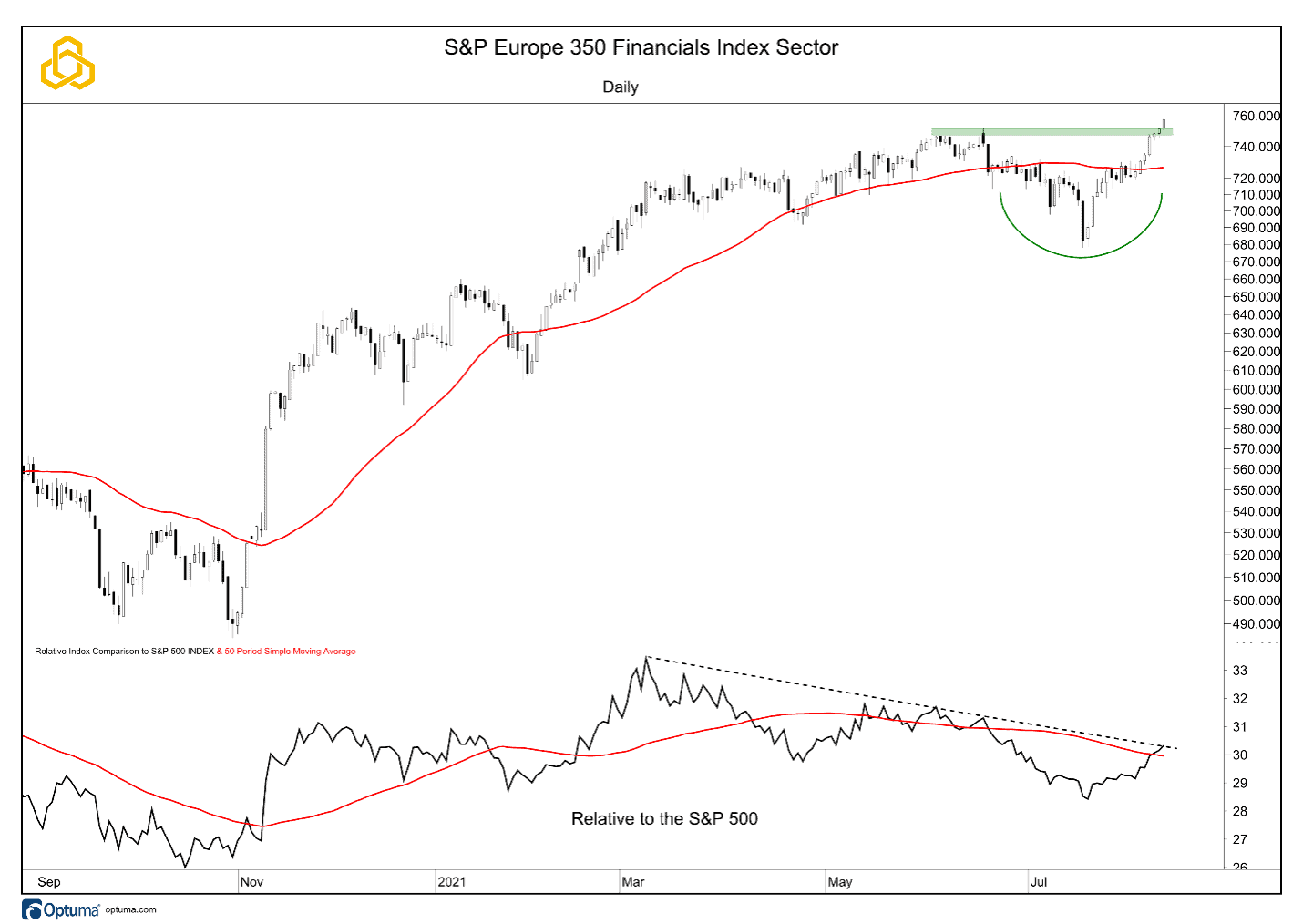
NYSE Breadth
The Advance/Decline for the NYSE has improved over the past week, retaking the rising 50-day moving average after undercutting it for the first time since October 2020. The A/D Line does remains in a divergence relative to the S&P 500 which is trading at record levels after a successful test of its own 50-day moving average.
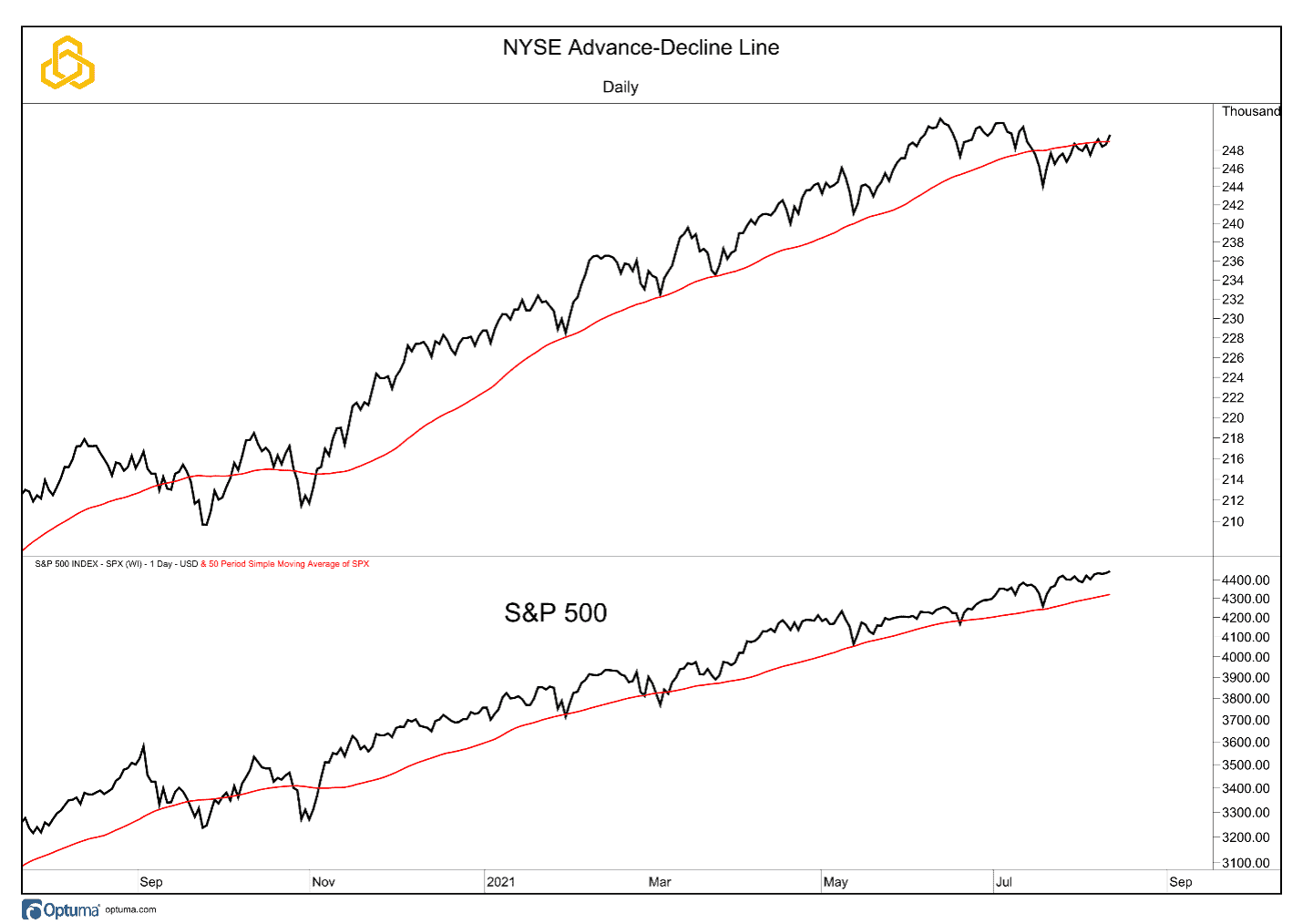
The NYSE’s Advancing – Declining Volume Line remains below the 50-day moving average despite some improvement over the past week. Some may chalk this up to slow August trading, but equity bulls want to see this metric get in gear with the S&P 500 regardless of the month of the year.
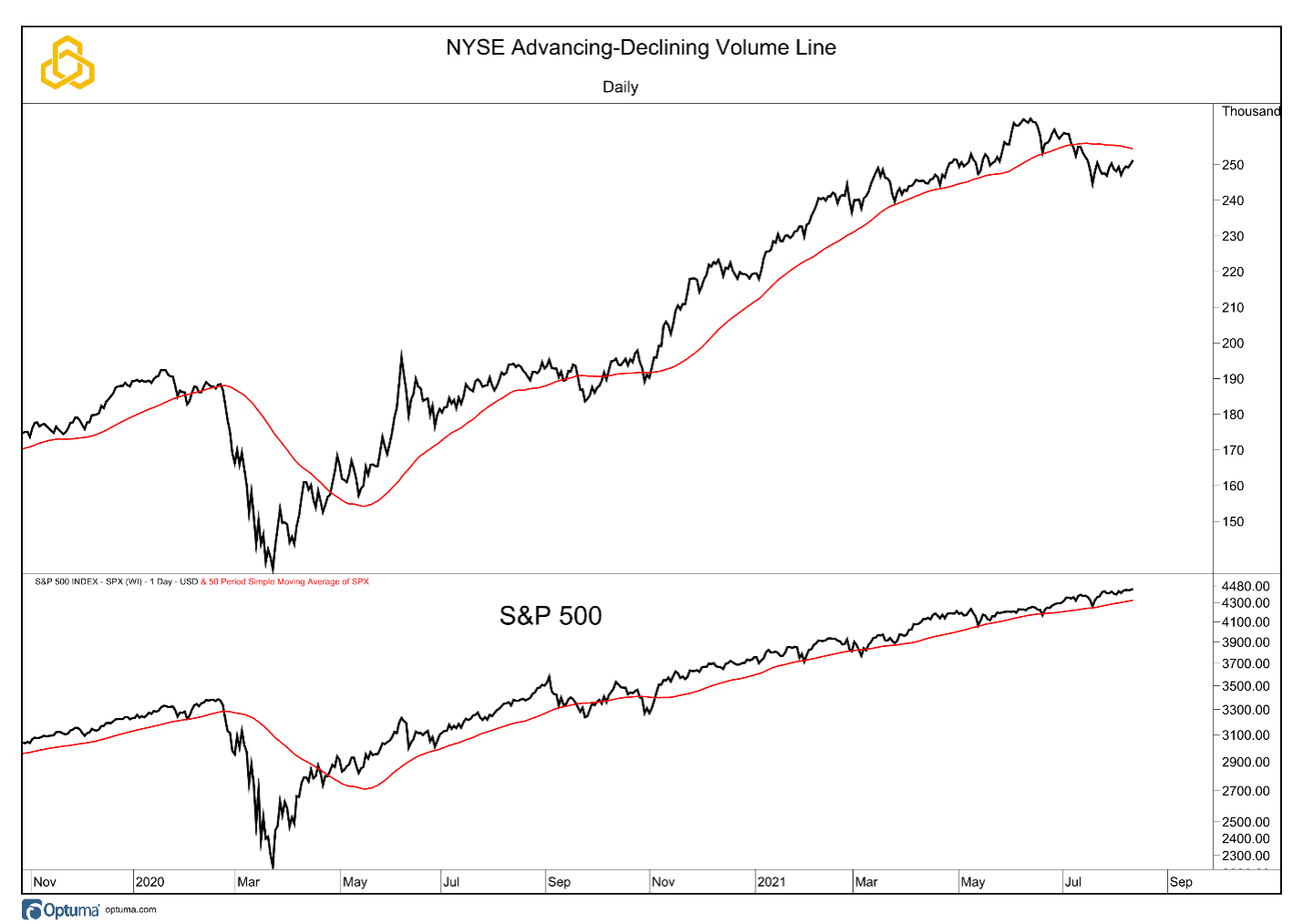
The 5-day moving averages of issues on the NYSE making new 52-week and six-month lows have moved to the downside in recent days, but both remain above the 1% level for now. Both metrics have been making higher lows of late, something that equity bulls want to see reverse in the near-term.
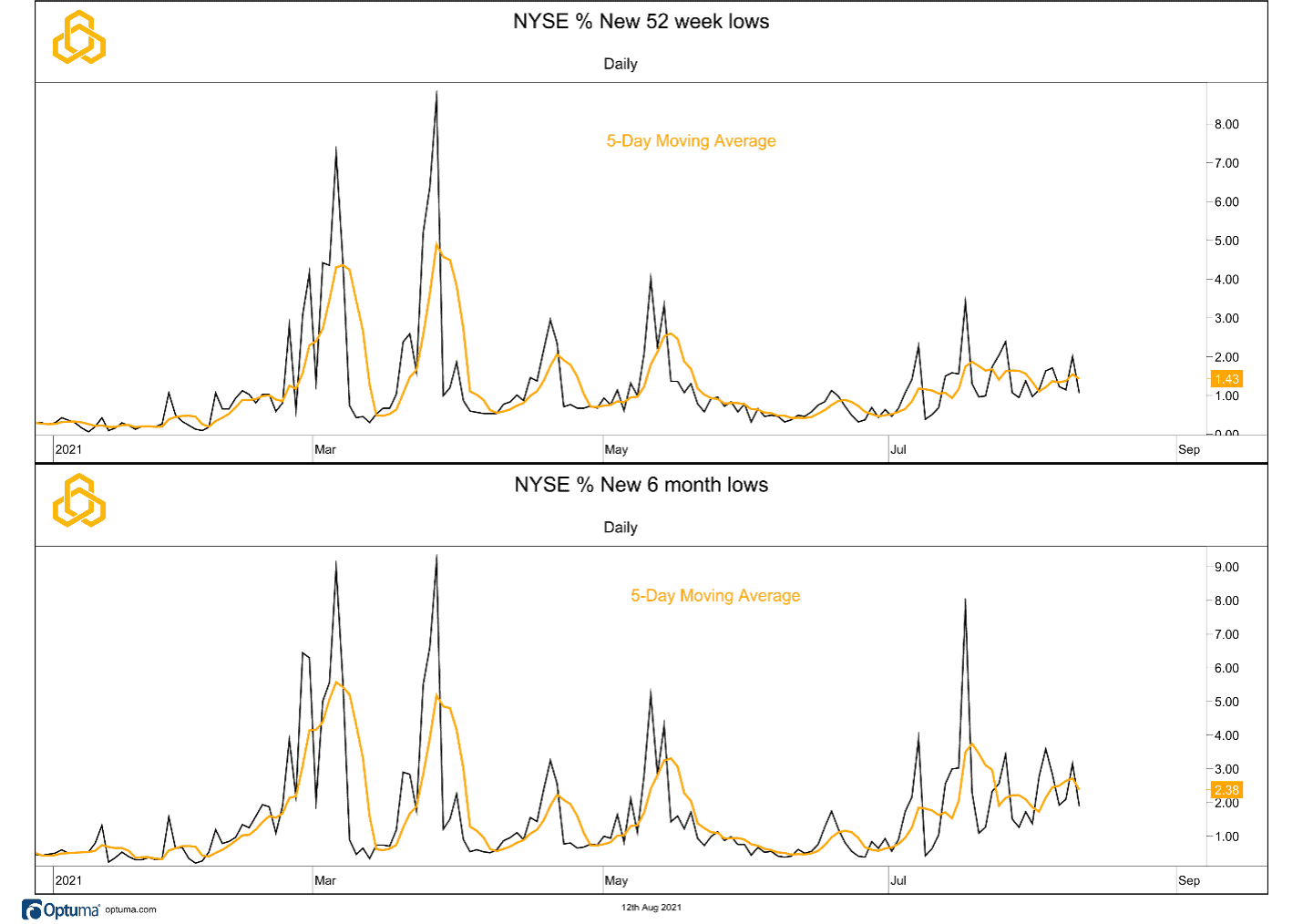
The 5-day moving averages of the percentage of NYSE issues making new 52-week and six-month highs have seen a slight decline over the past week for both metrics. At the same time, the actual percentages have been making lower highs since the start of August.
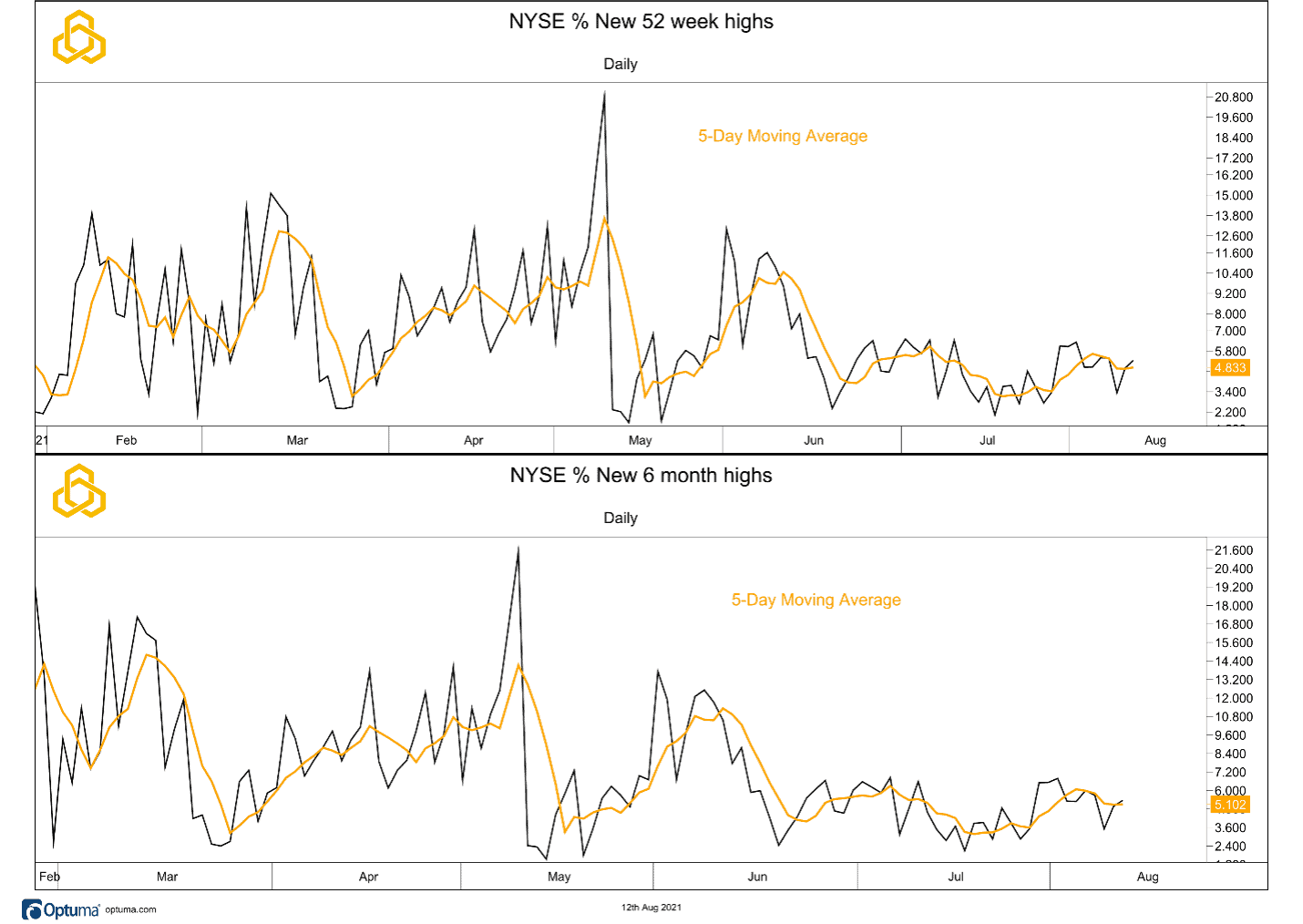
The percentage of issues on the NYSE that are trading above their respective 200-day moving averages is flat on the week, remaining below the 60% level, resistance, and the downtrend line. Retaking 60% would be an important step in improving the breadth dynamics for the equity market, which has largely ignored the divergence that has been playing out since the start of the year.
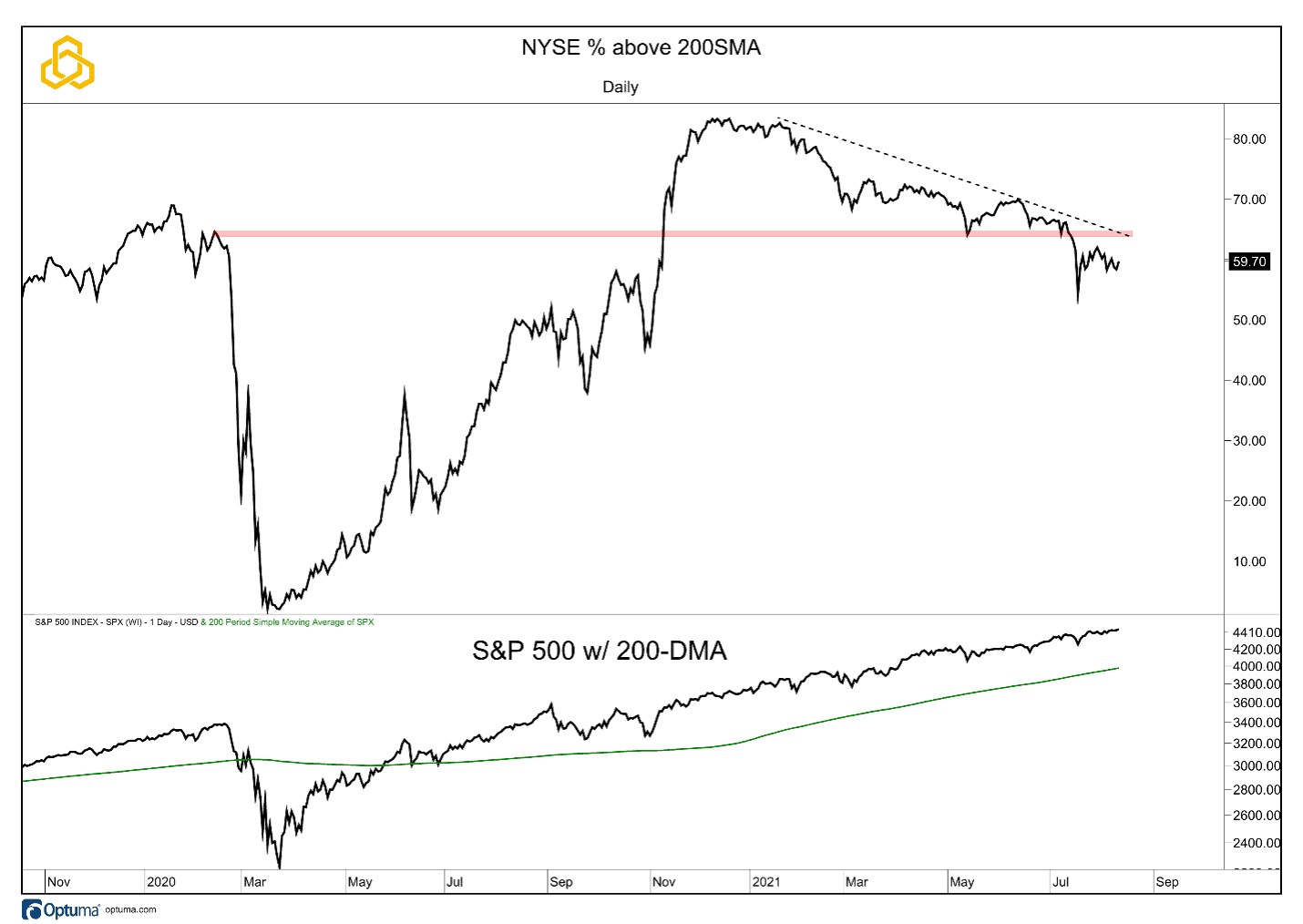
The percentage of NYSE issues trading above their own 50-day moving averages has increased for a second consecutive week but remains below the key 60% mark. The series of lower highs and lower lows since November remains in place but again, has largely been ignored by the S&P 500.
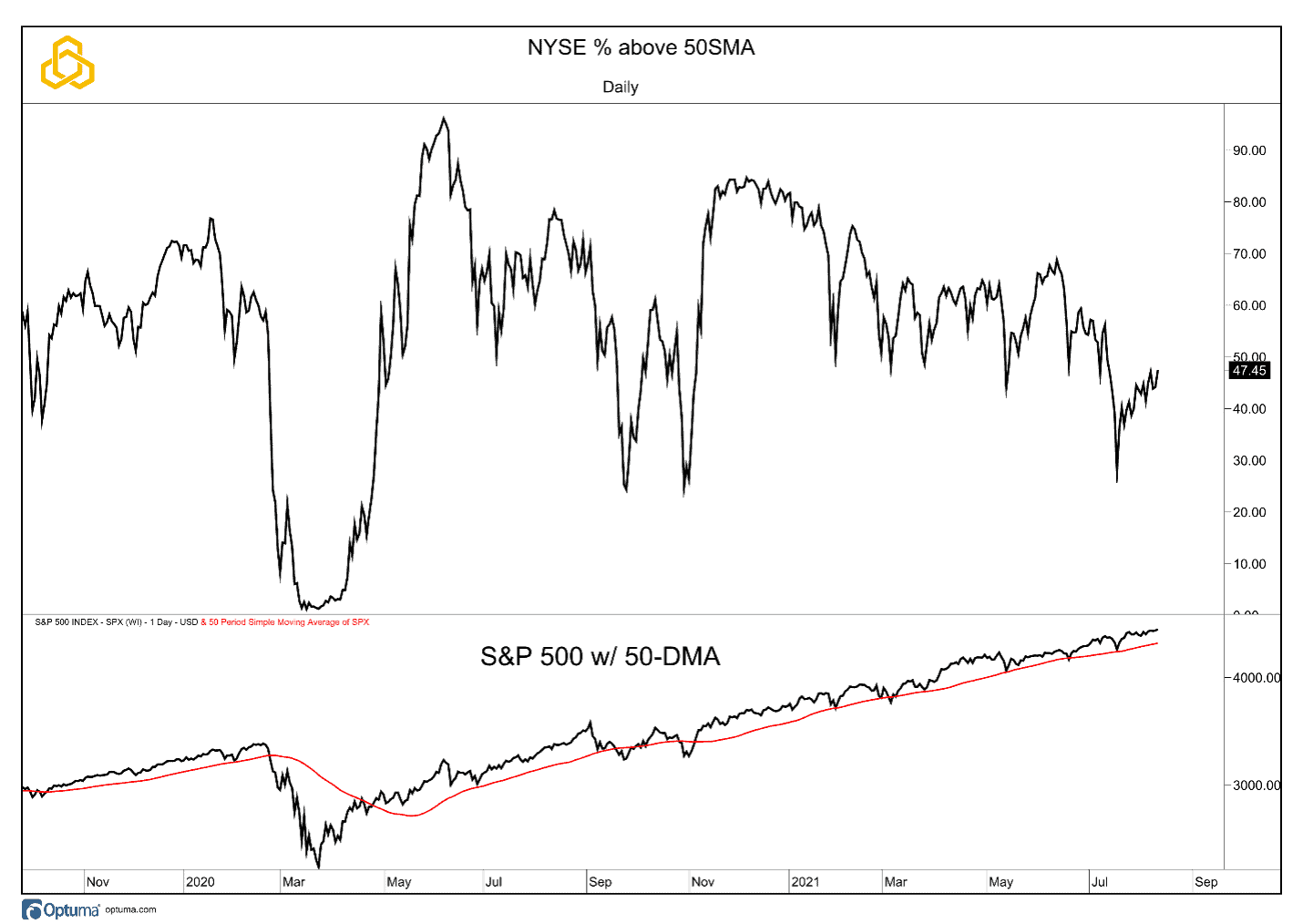
The short-term trend is where we see the largest improvement once again this week. The percentage of stocks trading above their 20-day moving averages jumped from ~45% to more than 56% and has made a higher high relative to the June and July peaks. The S&P 500 remains above its own 20-day moving average.
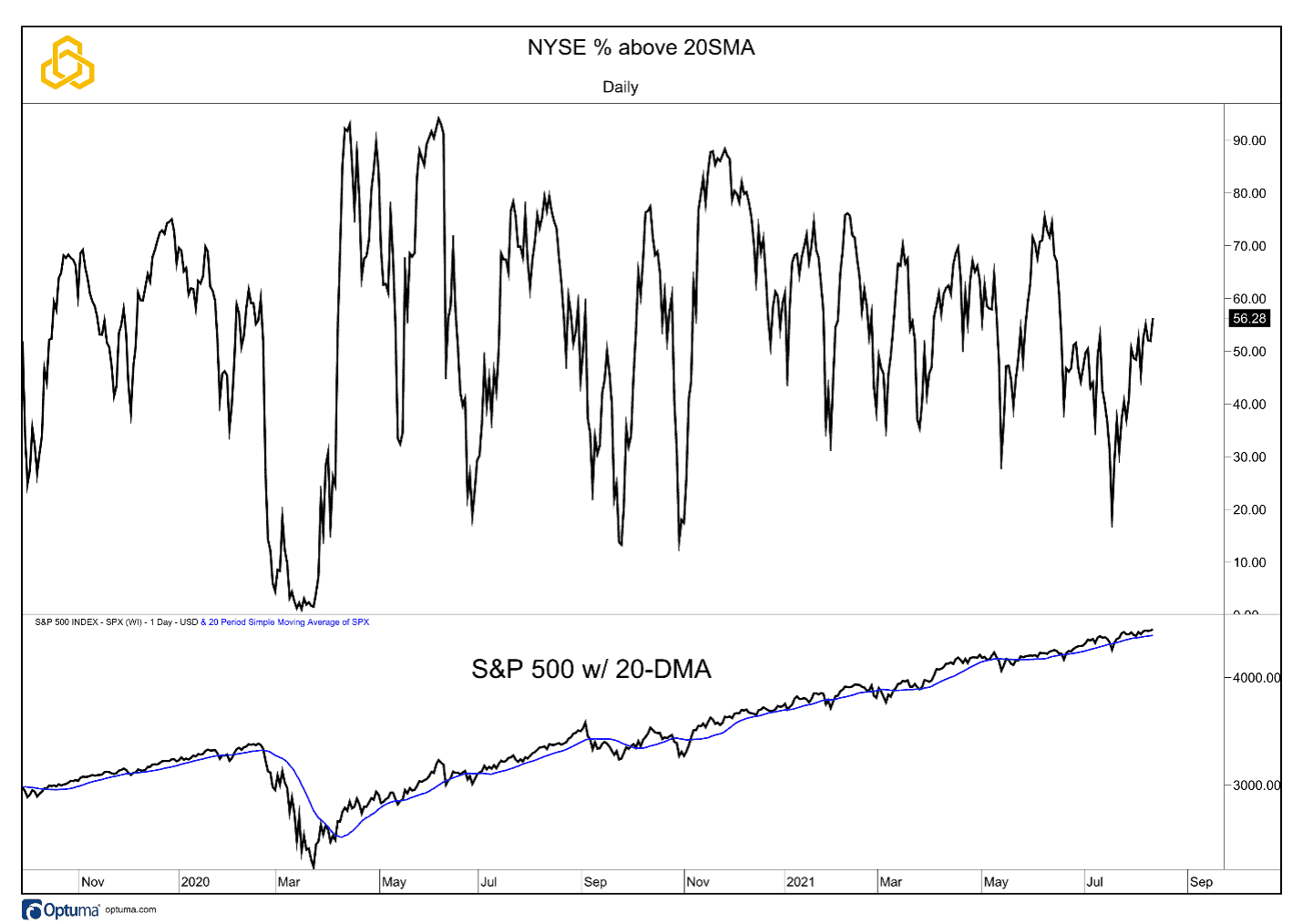
S&P 500 Breadth
Breadth metrics for the S&P 500 continue to be stronger than those of the NYSE cross the board:
- Advance/Decline Line: New high after holding the 50-day moving average.
- Percent Above Their 200-Day Moving Average: 85% from 81% last week.
- Percent Above Their 50-Day Moving Average: 67% from 52% last week.
- Percent Above Their 20-Day Moving Average: 72% from 54% last week.
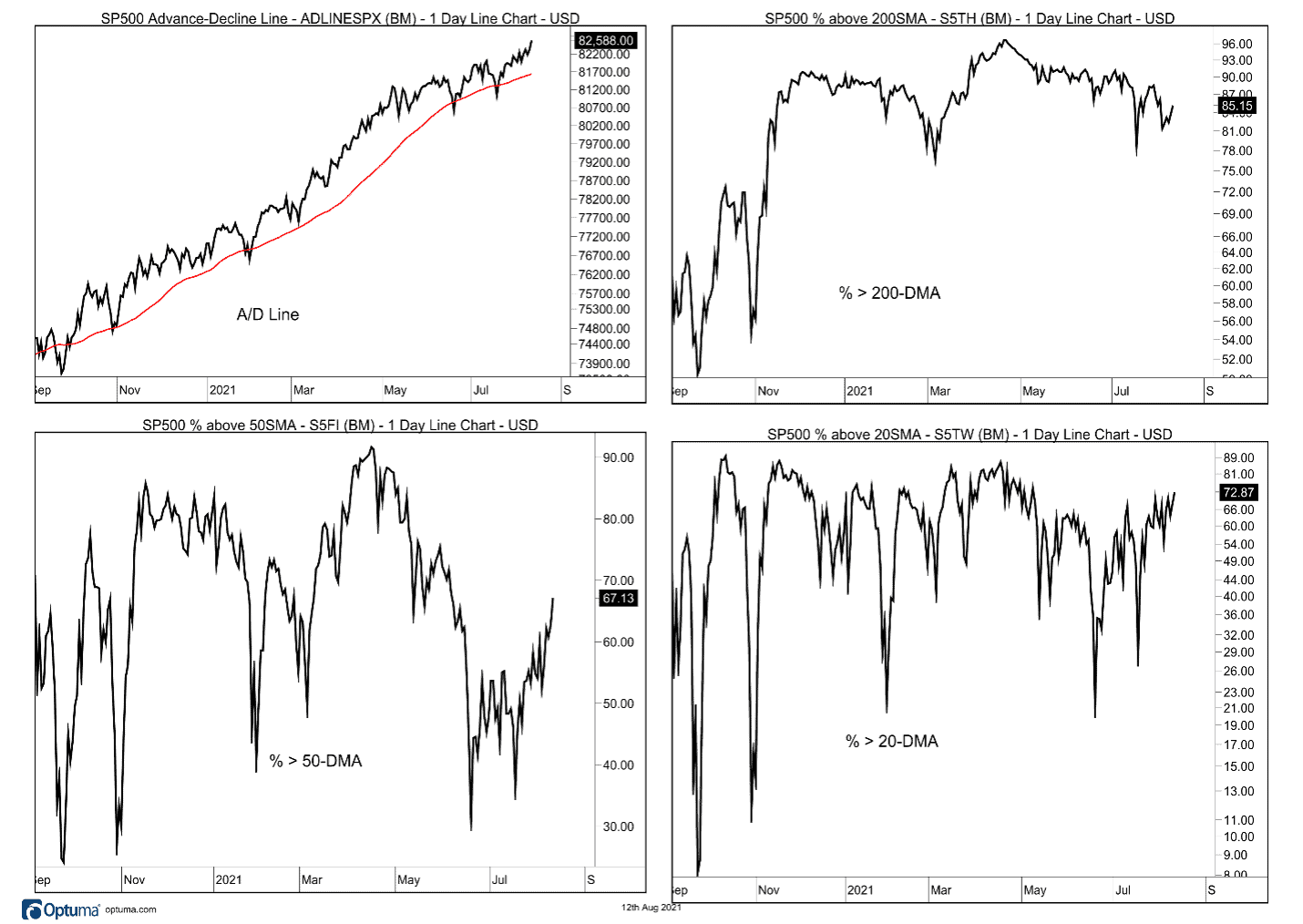
The A/D Line confirms the record highs seen by the index and we note that the 50 and 20-day metrics have been making higher highs and higher lows since June.
Small Cap Breadth
Perhaps most importantly, breadth metrics for the S&P 600 Small Cap Index have also improved this week.
- Advance/Decline Line: Retakes the 50-day moving average.
- Percent Above Their 200-Day Moving Average: 69% from 62% last week.
- Percent Above Their 50-Day Moving Average: 50% from 30% last week.
- Percent Above Their 20-Day Moving Average: 70% from 42% last week.
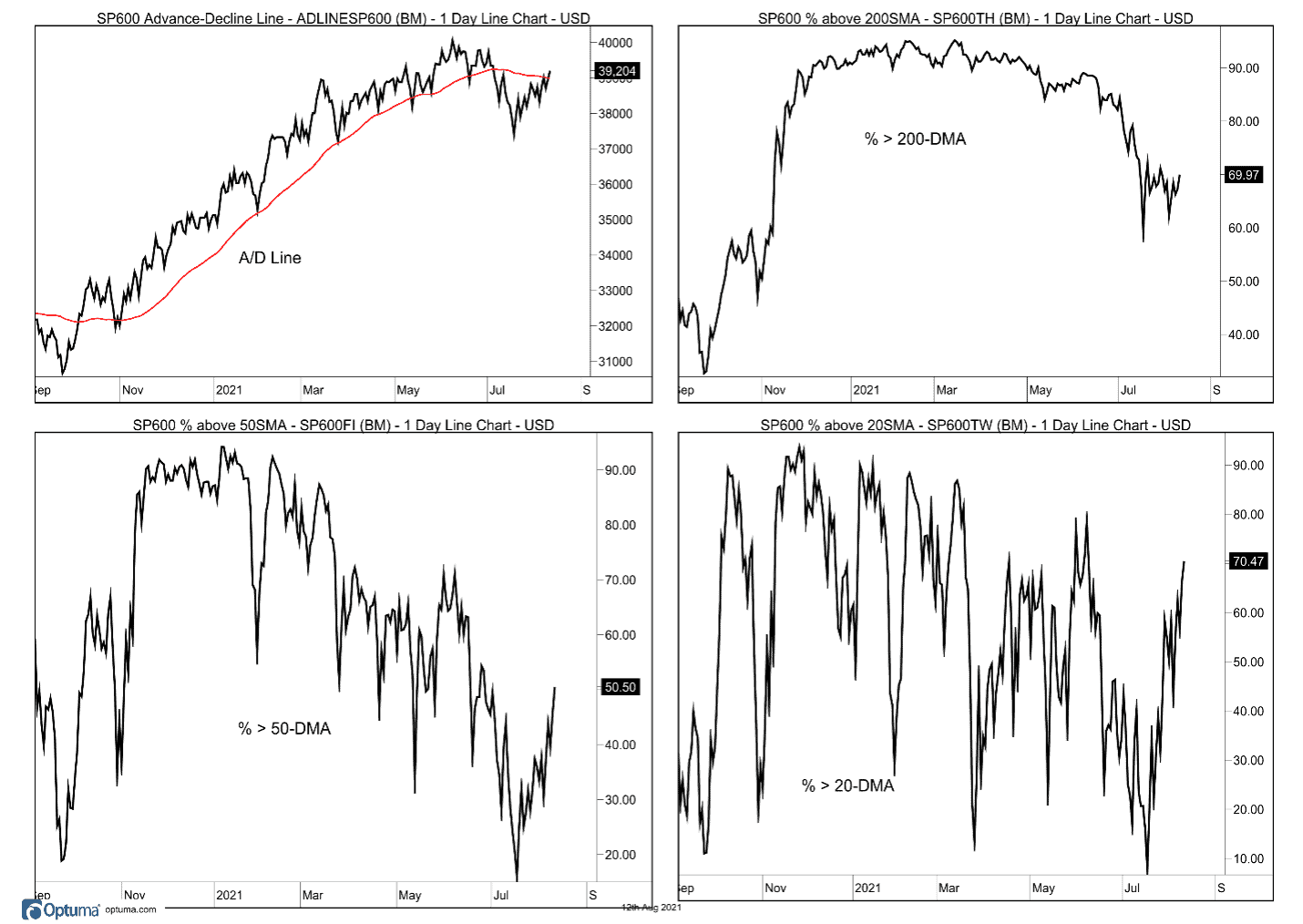
Take-Aways
Last week we lamented that we didn’t have anything new to say, but this week we do. Breadth metrics have improved across the equity market in the U.S. The improvement in small caps is perhaps the most impressive of the bunch. While not out of the woods yet, these measures of market participation are moving in the right direction (for the bulls at least). This raises an interesting question: if the market did not crack while breadth was weakening, what happens as it improves? As always, the price trend is likely going to be the best guide.
